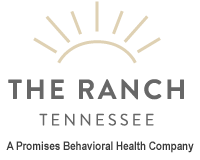Post-traumatic stress disorder (PTSD) and substance abuse unfortunately often occur together. For those wanting to help patients, it has been hard to know which problem needed to be dealt with first. Some advocated recovery from substance abuse as a first attack since PTSD treatments themselves can sometimes be enough to create an urge within patients to seek escape and relief. Yet, at the same time, people living with unaddressed PTSD find it very difficult to achieve sobriety. It seemed very hard to unscramble the egg. A recent study now suggests that the choice of which condition to treat first may be moot. An integrated approach which successfully addresses both problems at the same time could become the new standard. The study was conducted in Australia over a nine month period and involved 103 patients living with both PTSD and an addiction to either alcohol or drugs. A significant number of patients actually abused more than one substance; usually alcohol and another drug. Patients in the study were randomly selected to either pursue addiction treatment alone or were part of a group which received treatment for substance abuse and PTSD at the same time. Those treated for addiction only were free to choose from a variety of therapies. The group treated for both conditions also underwent various substance abuse programs, but all were given the same treatment for their PTSD. One of the characteristics of PTSD is the sufferer’s avoidance of anything which might remind him/her of the trauma which precipitated their condition. Thus, at some point, helping a patient face the fear and work through it becomes a necessary part of recovery. This is called Exposure Therapy. Exposure to the trauma does not happen right away however. The PTSD treatment often begins with sessions devoted to educating patients as to how and why substance abuse so often goes hand in hand with trauma. PTSD patients received cognitive behavioral therapy – an approach which helps people understand how thoughts drive behaviors and emotions. In this way patients learn that dealing with thought habits is one way to take control of behavioral habits. Eventually, the person with PTSD is asked to confront the painful memory and develop new ways of thinking about it. Exposure therapy is considered to be the gold-standard for PTSD treatment. The Australian study compared outcomes between groups which underwent addiction treatment plus exposure therapy and those treated for substance abuse alone. The study found that PTSD could be successfully treated at the same time as addiction. The symptoms of PTSD were measurably improved and the rate of addiction recovery pretty much mirrored that of the group who addressed their abuse problem only. And while neither group demonstrated strong rates of total sobriety (both groups were around 50 percent), it was notable that addressing the patient’s PTSD concurrently did nothing to hinder his/her ability to deal with addiction. An integrated approach means it is no longer necessary to choose which condition gets primary attention.
